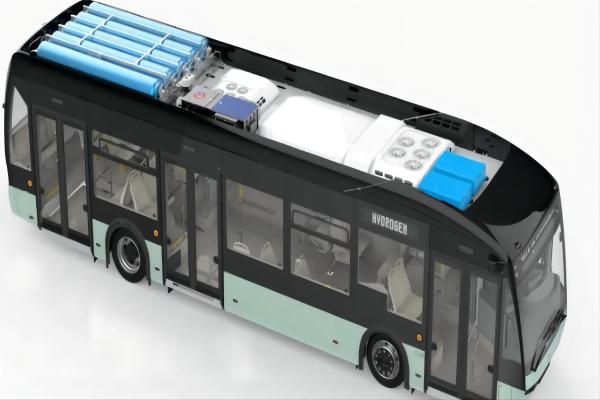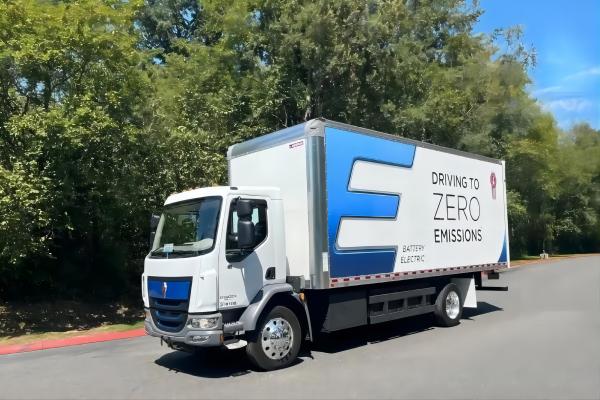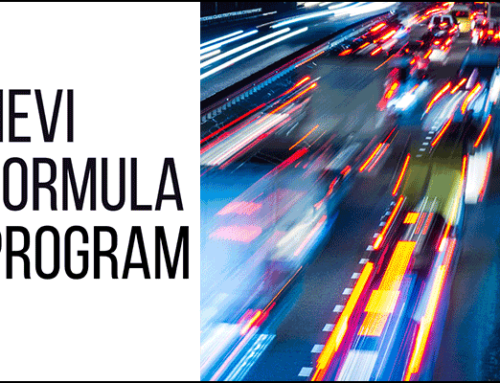Whether in the field of passenger cars or commercial vehicles, the new energy of vehicles is steadily advancing. Electrification and hydrogen fuel may become mainstream in the future.
Turkish bus manufacturer Karsan recently showcased its first hydrogen-fueled vehicle at the IAA transport show. The e-ATA Hydrogen is a 12-meter bus that can carry up to 95 passengers (40 seats) and has a range of more than 500 kilometers.

In the e-ATA Hydrogen, Karsan combines a 250 kW electric drive with a 70 kW fuel cell and a 30 kWh battery. Five cylindrical pressure tanks are placed in the roof rear area, but the Turkish manufacturer only states a volume of 1,560 liters, not a hydrogen capacity in kilograms.
At a pressure of 350 bar and a density of about 24 kg of hydrogen per cubic meter, the tank capacity is 37.5 kg. As a comparison: Solaris offers its Urbino 12 Hydrogen 350km of range and a comparable tank size. So either Karsan is more efficient, or the manufacturer decides to go with a 700-bar system – in this case, at a density of 40 kilograms of hydrogen per cubic meter, 62 kilograms of hydrogen can fit in a tank.
The electric drive is supposed to be a particularly quiet in-wheel motor, and the battery works with lithium titanate battery chemistry. In-wheel motors allow the interior to be very flat and ventilated. For the body, Karsan offers a choice of two or three doors. The e-ATA Hydrogen can carry up to 95 passengers, 40 of them in the seats. The model comes with air suspension from the factory, and optional assist and digital mirror replacement systems can be ordered. Karsan says it uses proven components from the European bus supply industry.
The e-ATA Hydrogen, now on display at the IAA transport exhibition in Hannover, is based on the e-ATA with battery-electric drive that was launched a year ago. It is available as a 10-meter or 12-meter single-passenger bus (with a battery capacity of up to 300 or 450 kWh) and an 18-meter articulated bus. Here, up to 600 kWh can be installed, and thanks to the two drive shafts, the maximum power of the articulated bus is twice that of 500 kW. It is unclear whether fuel cell drive will also be offered in the articulated bus. Solaris showed this 18-meter model with a fuel cell shortly before the Hannover trade fair.
Recently, another established truck manufacturer has joined the team of new energy vehicle research and development, which is the American truck brand Kenworth. A few days ago, Kenworth executives said in a speech at the headquarters that the brand will continue to invest in pure electric and hydrogen-powered trucks to meet the market challenges brought about by future truck innovations.

According to Kenworth’s internal assessment, electrification and hydrogen fuel will be the mainstream in the future, and with the rising international oil prices and the complex energy situation, it is only a matter of time before new energy sources replace traditional oil.
Stephan Olsen, marketing manager of Kenworth, said that at present, almost all policies for the development of commercial vehicles come from environmental emissions, and zero emissions have become the consensus of the development of the commercial vehicle industry.
Even the United States, which has always paid less attention to fuel consumption, has signed a memorandum of understanding with 17 states and Canada, aiming to have 30% of Class 7-8 heavy-duty trucks registered as zero-emission vehicles (ZEV) by 2030. All commercial vehicles become ZEVs by 2040. The U.S. government’s current climate policy sets the benchmark for net-zero emissions by 2050.
Under the guidance of this plan, the number of industrial electric vehicles in the United States and Canada will show explosive growth, and it is expected to exceed 160,000 by 2040, becoming one of the world’s largest demand for electric commercial vehicles.
At present, the energy supplementation system for electric trucks is not well established, and there are only a handful of hydrogen refueling stations for hydrogen fuel cell trucks. Therefore, Kenworth’s current plan is not only to develop new energy trucks, but also to expand the network for energy supplementation, which is a big challenge for a commercial vehicle brand.














